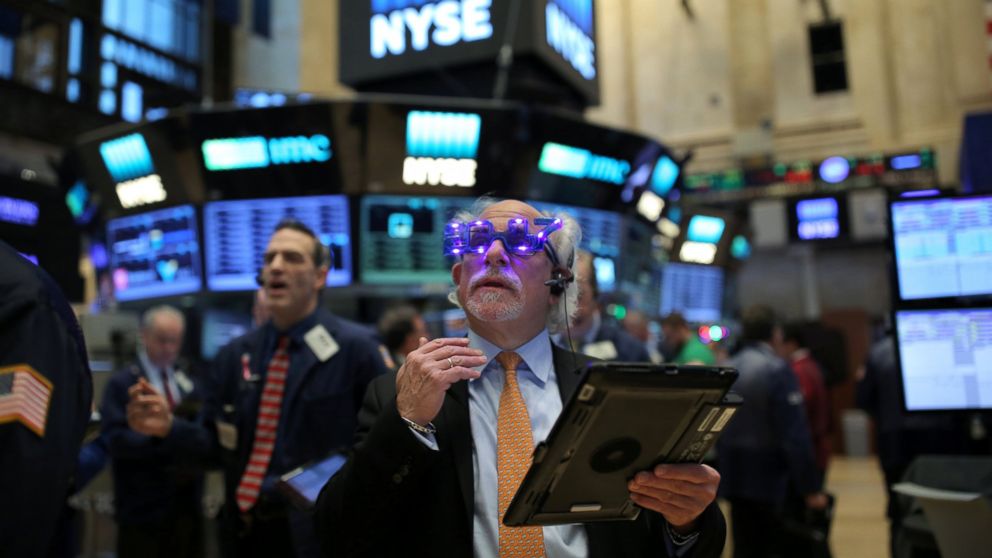Send in the Bulls: 2017 Could Be a Banner Year for Stocks
The tea leaves for all of 2017 look good.

— -- What 2017 will bring to the stock market is, of course, anybody’s guess. Many observers had been bearish on market growth until the recent, so-called Trump rally, which has seen domestic equities rise to new highs.
Though some economists and market analysts remain doubting Thomases, more market watchers are falling into the 2017 growth camp. With the S&P 500 up more than 10 percent for the year as of late December, there’s some optimism that this will continue. If the so-called January effect, the historical tendency of stocks to rise early in the year, takes effect in January, this could morph into a multi-month rally.
There are historical indications that the anemic performance of stocks over the past two years also makes this likely. Performance in 2017 could be part of the cycle described best by famed investor John Templeton: that bull markets are born (or resume) out of pessimism, rise on optimism (which has been evident lately) and die on euphoria (which we’re far from now).
The 2016 market started poorly. In January and February, the up-and-down share price gyrations scared investors. After stabilizing, the stock market was a snoozer until the Trump election rally. Stocks finished the year strongly on perceptions that there may be a more business-friendly climate in Washington, that tax relief could be in store, that some regulations hampering investment might be relaxed, and that the government would likely make large investments in infrastructure.
And, as always, market growth hinges on corporate earnings, which now have some positive momentum. Third-quarter earnings came in better than expected, and expectations for the fourth quarter are rising. If earnings for the fourth quarter rise 10 percent or so (which is the estimate), and that trend continues (I see no reason why it shouldn’t), we could see a quite decent market in 2017, perhaps with the S&P 500 showing gains of 11 percent for the year.
But I believe the market has probably gotten a little ahead of itself in the short term. For example, the S&P 500’s strong performance is largely the result of a late-year rally. Sounds great, right? Well, it is if you own the right stocks. The reason for this impressive average figure is that a select group of companies in this index -- only 18.6 percent -- are hitting new highs. That means that more than 81 percent of stocks in the index aren’t. If you own those and not the performers, your returns would be quite different. (The same holds if you’re invested in international stocks, particularly emerging markets, which didn’t fare well in 2016.)
Yet the tea leaves for all of 2017 look good. Analysts expect overall earnings gains in the first quarter of about 14 percent. If this comes to pass, it could drive an expansion that would amount to a reversal of a current problem in the market — that stock valuations have been rising in the absence of significant earnings increases.
Gains in 2017 would also be consistent with a pattern in market history: After weak years amid a bull market, such as the flat market in 2015, the S&P 500 has shown a tendency to follow with two strong years, according to analysis from Ned Davis Research.
Since 1946, this has happened nine times. If that pattern holds, 2017 is poised to be a great year for domestic stock investors with well-diversified portfolios governed with self-discipline. This is not to say that the whole year will be a cake-walk. A correction is highly likely, though a brief 10 percent correction occurred in early 2016. Corrections on average occur about once a year. Investors who panic and sell during corrections often regret this because they can’t get the overall gains they would have if they stayed in the market.
Another key factor that should help domestic stocks is the current trend in interest rates. Long-term rates are quite a bit higher than short-term rates, which is as it should be in the normal, growth-inspiring order of things. (When short-term rates are higher than long-term rates, economic recessions tend to loom, often threatening the stock market.)
Though many believe that global growth will remain dismal in 2017, I don’t agree. The better our market is doing compared with global markets, the more money global investors tend to send us. Brisk foreign investment in the U.S. stock market has been a distinct trend in recent years, as global economies have been savaged by severe long-term unemployment, flat or even negative interest rates (people actually paying banks in Europe to keep their money!) and scant share-price growth.
With factors fueling domestic and foreign investment in the U.S. market looking so positive, investors could be in for a very good year.
Dave Sheaff Gilreath is a founding principal of Sheaff Brock Investment Advisors LLC. He has more than 30 years of experience in the financial services industry.
Any opinions expressed in this column are solely those of the author.




